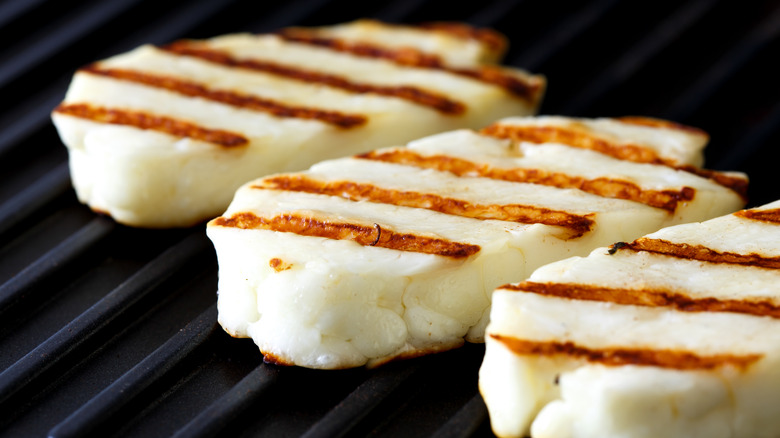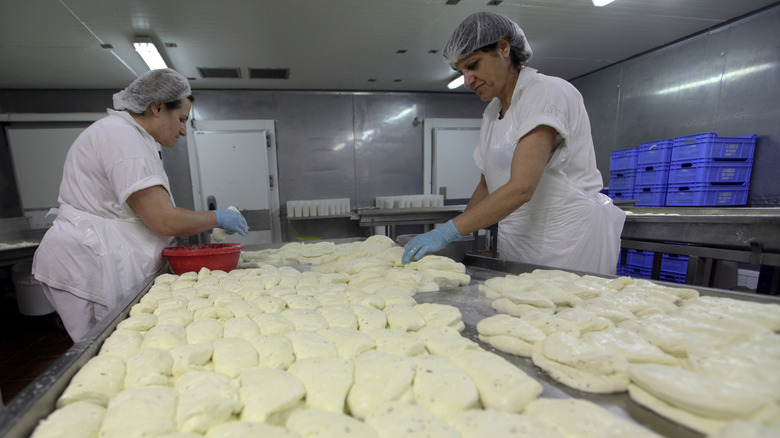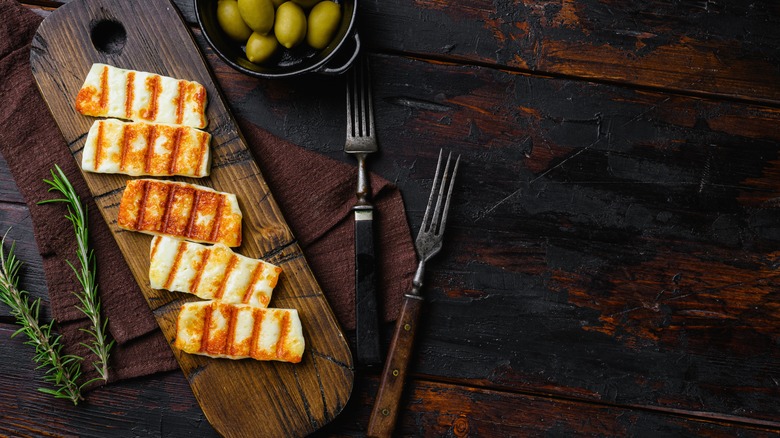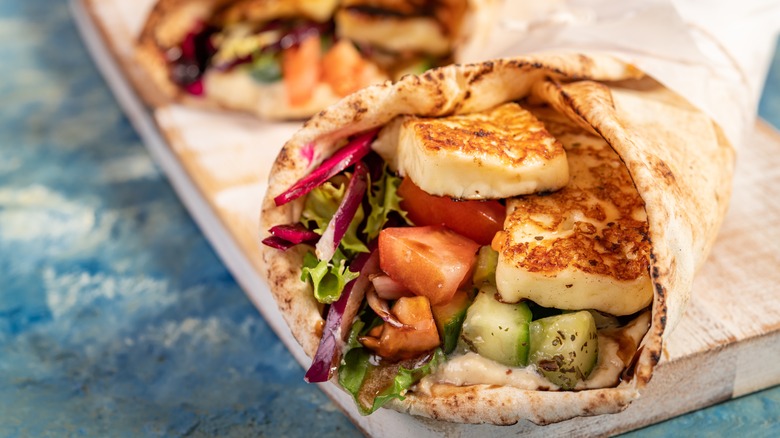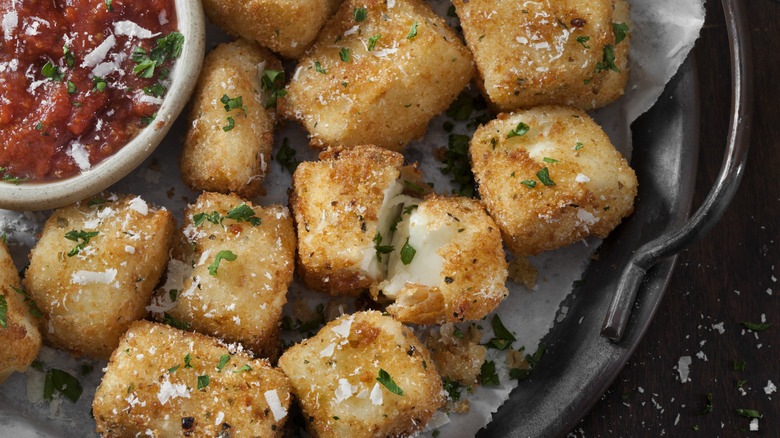Halloumi Is The Tangy Cheese You Should Try On The Grill
Cheeses cover the gamut of textures, from silky smooth burrata to dense aged parmesan. Such textures not only impact the enjoyment of the cheese but how they're cooked with it, too. Variations in the cheese-making process lead to differences in textures, flavors, and melting points, which results in different gooey sensations.
For a cheese with melting quality unlike any other, turn to halloumi. Thrown on the grill, it develops delectable charred marks while containing a springy, slightly melty interior. With an olive oil baste and a sprinkle of salt, it makes for a delicious standalone dish utilizing only a few ingredients. Or repurpose it further, integrating it as a skewer component or the star of a sandwich.
While Cypriot in origin, satiating halloumi is now enjoyed all around the Mediterranean. And although grilling may be its most renowned preparation, it's also enjoyed raw, in stews, and pan-fried. So, exactly what kind of cheese is this wondrously delicious creation? Let's dive into the details.
What is halloumi?
Halloumi has been interlinked with the island of Cyprus for centuries. The first written reference dates all the way back to 867 A.D, when cheese was mentioned in a poem. From there, the cheese style spread to Mediterranean neighbors Italy and Turkey, where it's now known by distinct names.
Traditionally, halloumi is prepared with a combination of sheep's and goat's milk, although today, cow's milk is also utilized. The cheese is firm to the feel, with generous salting during production. It's then typically sold brined, absent of bacterial action. For this reason, it tastes less savory than other cheeses, with a direct, salty flavor and slightly chewy, squeaky mouthfeel.
However, halloumi really comes alive when heated. A boiling step during production makes it well predisposed to melting, with the interior softening to semi-firm but not stringy. Simultaneously, its exterior turns a palatable brown tinge, forming a delectable crust. Such factors make it perfect for the grill — here's how to give it some char.
How to grill halloumi
Start the grilling process by draining the block of halloumi. Then, slice the cheese into thick, wide pieces. Aim for no less than a third of an inch, with up to a half inch an appropriate size. If the slices are too thin, they'll fall apart on the grill, yielding a melted, lumpy mess. While prepping the cheese, heat the grill; it also needs to be searing hot to create the delectable charred crust.
Before throwing the halloumi on the grill, thoroughly brush both sides with olive oil. It's not necessary to salt the cheese since it's already well-salted on its own. In fact, if the halloumi is unpalatably salty, some soak the cheese in water for a day, although such a step is rare.
Finally, throw the cheese onto the hot grill. Sear for around three minutes on each side until browned char marks appear. Take care not to disturb the cheese too much; excessive movement will ruin its textural integrity. Check the halloumi's done by carefully pressing down on it — there shouldn't be any released moisture. Now, the cheese is ready to serve standalone or with accompaniments.
What to serve with grilled halloumi
This delectable cheesy dish is often enjoyed as a side alongside other Cypriot grilled favorites like pork and chicken souvlaki. It also pairs wondrously with vegetables, like grilled zucchini, eggplant, and peppers. Serve it as part of a salad plate, accompanied by fresh tomato and cucumber. Or turn it into a skewer, its texture juxtaposed by tomatoes and garnished with mint. The cheese is so delicious off of the grill it doesn't need intricate repurposing.
Nevertheless, it is a versatile and protein-rich vegetarian food, which can make it a satiating centerpiece. Use it in a sandwich, in place of mozzarella, or even chicken. Or make it the star of a bowl; its direct salty flavor lends easily to a broad range of flavors. Combine it with everything from salsa to Asian-style soy glazes and rice. Of course, it'll pair especially well with Mediterranean favorites like couscous or farro. Don't be intimidated to incorporate the cheese into a wide variety of dishes; odds are it'll meld.
Other methods of preparing halloumi
While the grill may be the most well-known method, it's not the only method fit for prepping the cheese. In Cyprus, halloumi is often enjoyed raw in addition to grilling. It can simply be simply savored with bread or alongside watermelon for a refreshing rendition. Some even grate it onto pasta like parmesan.
Enjoying the cheese's gooey interior can also be accomplished through pan-frying. Pan-frying the cheese and serving it with eggs is a common Cypriot breakfast. Cooking the cheese on the stovetop retains the oil dressing in the pan, making it a great candidate for saganaki. Or use the heated halloumi in a salad — the pan-seared crust melds well with fresh components. Another way of achieving its melted texture is in an air fryer.
Halloumi also has a paneer-like consistency, which makes it a fitting ingredient in stews and curries. The cheese won't break down in the sauce, a perfect vessel for a spicy, aromatic tomato-based sauce. Such versatility is precisely the cheese's strong suit; few components will clash.
